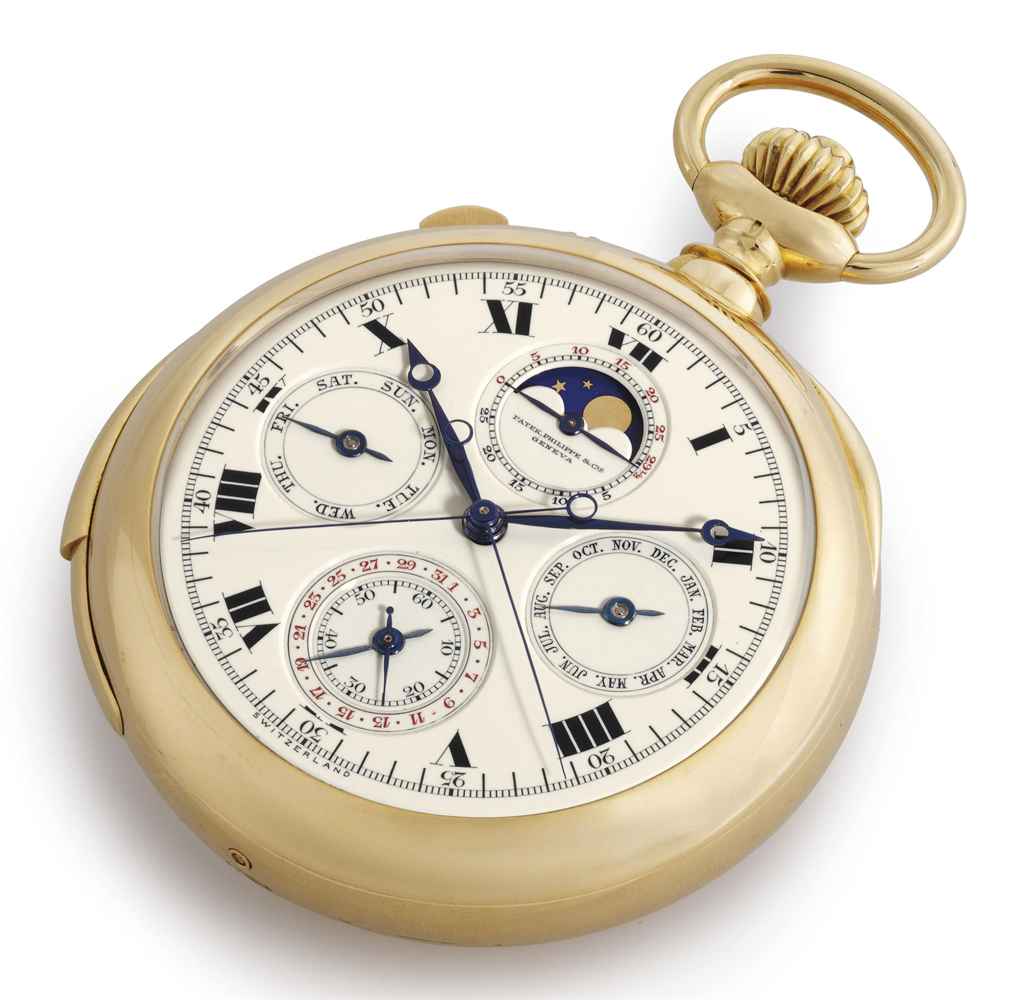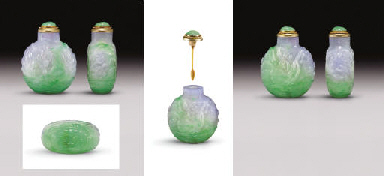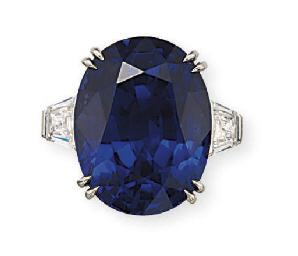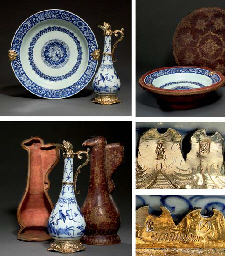Lot details Ancient region of Gandhara, Kushan period, 4th-5th century. The large head is superbly modeled with a serene and meditative expression, with almond-shaped eyes below gently arched brows, distinct recessed urna, aquiline nose, and full lips forming a calm, benevolent smile. The wavy hair is surmounted by a domed ushnisha. Scientific Analysis Report: A Thermoluminescence sample analysis has been conducted by Oxford Authentication, TL test no. N116n7, dated 18 October 2016, and is consistent with the suggested period of manufacture, a copy of the thermoluminescence analysis report accompanies this lot (the original is lost). Provenance: Arthur Huc (1854-1932). Marcel Huc, inherited from the above. Thence by descent within the same family. Arthur Huc was the chief editor of La Dépêche du Midi, at the time the leading newspaper in Toulouse, France. He was also an accomplished art critic and early patron of several artists, including Henri de Toulouse- Lautrec. At the same time, Arthur Huc was a keen collector of Asian art, a passion that he inherited from his legendary ancestor Évariste Régis Huc, also known as the Abbé Huc (1813-1860), a French Catholic priest and traveler who became famous for his accounts of Qing-era China, Mongolia and especially the then-almost-unknown Tibet in his book “Remembrances of a Journey in Tartary, Tibet, and China”. Inventory List: In 1954, L. Magniette, bailiff of the court in Toulouse (Huissier), was ordered to compile a complete inventory of the collection inherited by Marcel Huc from his father, Arthur Huc, the so-called “Inventaire Huc”. The present lot is listed in this inventory as follows: “Serie de vingt deux têtes en terre-cuite. GANDHARA” (series of twenty-two terracotta heads. GANDHARA). A copy of the inventory list and cover page are accompanying this lot. Condition: Very good condition, commensurate with dating and presenting magnificently overall. Some wear and firing flaws, minor nicks, shallow cracks, losses to exposed areas, all hardly noticeable due to a light-colored varnish coating which was applied a long time ago. Overall, fully consistent with the high age of this sculpture. French Export License: Certificat d’exportation pour un bien culturel Nr. 185425 dated 3 July 2017 has been granted and is accompanying this lot. Weight: 7.9 kg (excl. stand) Dimensions: Height 34 cm (excl. stand) and 55 cm (incl. stand) Mounted on an old associated hardwood stand. (2) The kingdom of Gandhara lasted from 530 BC to 1021 AD, when its last king was murdered by his own troops. It stretched across parts of present-day Afghanistan and Pakistan. Gandhara is noted for its distinctive style in Buddhist art, which developed out of a merger of Greek, Syrian, Persian and Indian artistic influence. Gandharan style flourished and achieved its peak during the Kushan period, from the 1st to the 5th century. In the first century AD, Gandhara was the birthplace of some of the earliest Buddhist images. The use of hard-fired ceramic instead of stone such as schist became popular during the later Gandharan period from the 4th to 6th centuries AD. Fired clay was expensive in the area, because the wood needed for the firing process was scarce. Therefore, such an expensive sculpture would have been a highly meritorious Buddhist offering. Only a few terracotta statues from this period and of this size have ever been recorded. The masterfully carved head of Buddha is a fine example of the rich cultural interplay and hybrid art styles of the Gandharan empire in the first centuries CE and embodies an idealized, transcendent male form of an earthly prince. Based on Greco-Roman prototypes, his elegant neck is slightly elongated, and his heavy eyelids frame a pair of almond-shaped eyes, his forehead remaining perfectly uncreased, and there is no tension in his rosebud mouth. While activated with energy, movement and life, the Buddha is simultaneously in a state of otherworldly tranquility. The sculptor has
Lot details Ancient region of Gandhara, Kushan period, 4th-5th century. The large head is superbly modeled with a serene and meditative expression, with almond-shaped eyes below gently arched brows, distinct recessed urna, aquiline nose, and full lips forming a calm, benevolent smile. The wavy hair is surmounted by a domed ushnisha. Scientific Analysis Report: A Thermoluminescence sample analysis has been conducted by Oxford Authentication, TL test no. N116n7, dated 18 October 2016, and is consistent with the suggested period of manufacture, a copy of the thermoluminescence analysis report accompanies this lot (the original is lost). Provenance: Arthur Huc (1854-1932). Marcel Huc, inherited from the above. Thence by descent within the same family. Arthur Huc was the chief editor of La Dépêche du Midi, at the time the leading newspaper in Toulouse, France. He was also an accomplished art critic and early patron of several artists, including Henri de Toulouse- Lautrec. At the same time, Arthur Huc was a keen collector of Asian art, a passion that he inherited from his legendary ancestor Évariste Régis Huc, also known as the Abbé Huc (1813-1860), a French Catholic priest and traveler who became famous for his accounts of Qing-era China, Mongolia and especially the then-almost-unknown Tibet in his book “Remembrances of a Journey in Tartary, Tibet, and China”. Inventory List: In 1954, L. Magniette, bailiff of the court in Toulouse (Huissier), was ordered to compile a complete inventory of the collection inherited by Marcel Huc from his father, Arthur Huc, the so-called “Inventaire Huc”. The present lot is listed in this inventory as follows: “Serie de vingt deux têtes en terre-cuite. GANDHARA” (series of twenty-two terracotta heads. GANDHARA). A copy of the inventory list and cover page are accompanying this lot. Condition: Very good condition, commensurate with dating and presenting magnificently overall. Some wear and firing flaws, minor nicks, shallow cracks, losses to exposed areas, all hardly noticeable due to a light-colored varnish coating which was applied a long time ago. Overall, fully consistent with the high age of this sculpture. French Export License: Certificat d’exportation pour un bien culturel Nr. 185425 dated 3 July 2017 has been granted and is accompanying this lot. Weight: 7.9 kg (excl. stand) Dimensions: Height 34 cm (excl. stand) and 55 cm (incl. stand) Mounted on an old associated hardwood stand. (2) The kingdom of Gandhara lasted from 530 BC to 1021 AD, when its last king was murdered by his own troops. It stretched across parts of present-day Afghanistan and Pakistan. Gandhara is noted for its distinctive style in Buddhist art, which developed out of a merger of Greek, Syrian, Persian and Indian artistic influence. Gandharan style flourished and achieved its peak during the Kushan period, from the 1st to the 5th century. In the first century AD, Gandhara was the birthplace of some of the earliest Buddhist images. The use of hard-fired ceramic instead of stone such as schist became popular during the later Gandharan period from the 4th to 6th centuries AD. Fired clay was expensive in the area, because the wood needed for the firing process was scarce. Therefore, such an expensive sculpture would have been a highly meritorious Buddhist offering. Only a few terracotta statues from this period and of this size have ever been recorded. The masterfully carved head of Buddha is a fine example of the rich cultural interplay and hybrid art styles of the Gandharan empire in the first centuries CE and embodies an idealized, transcendent male form of an earthly prince. Based on Greco-Roman prototypes, his elegant neck is slightly elongated, and his heavy eyelids frame a pair of almond-shaped eyes, his forehead remaining perfectly uncreased, and there is no tension in his rosebud mouth. While activated with energy, movement and life, the Buddha is simultaneously in a state of otherworldly tranquility. The sculptor has









.jpg)
.jpg)
.jpg)
.jpg)
.jpg)
.jpg)
Testen Sie LotSearch und seine Premium-Features 7 Tage - ohne Kosten!
Lassen Sie sich automatisch über neue Objekte in kommenden Auktionen benachrichtigen.
Suchauftrag anlegen